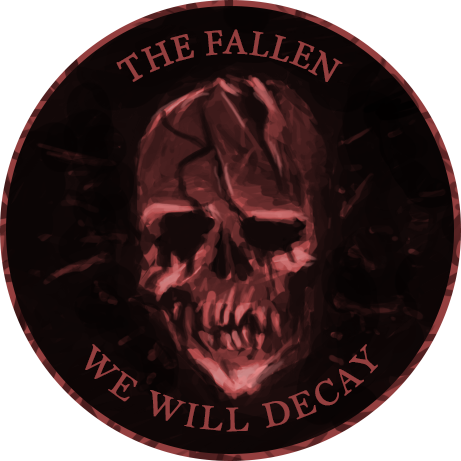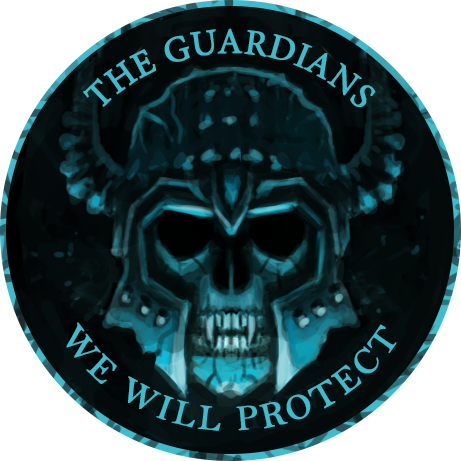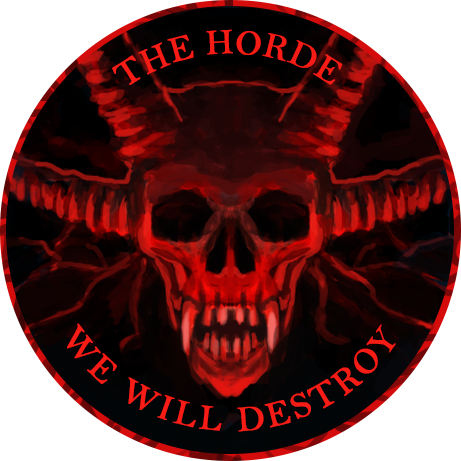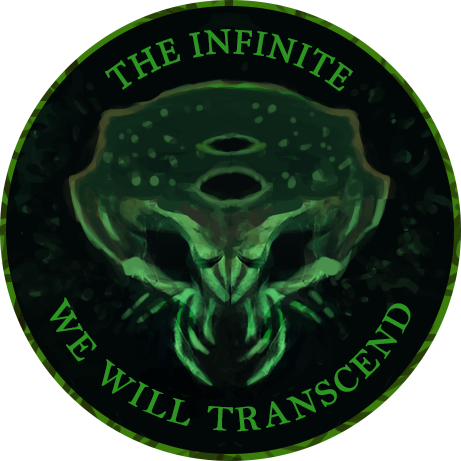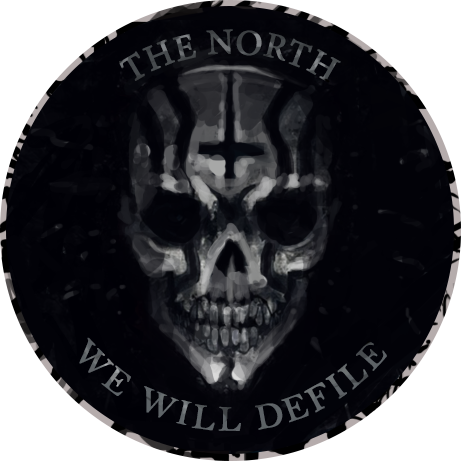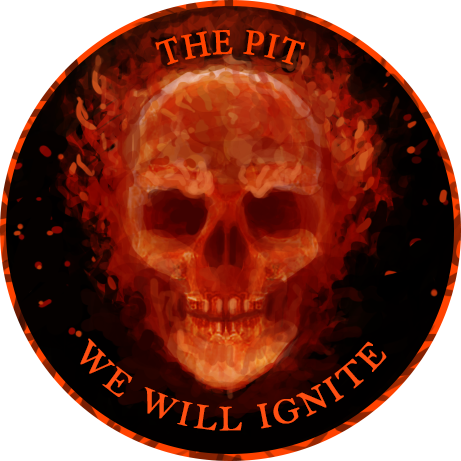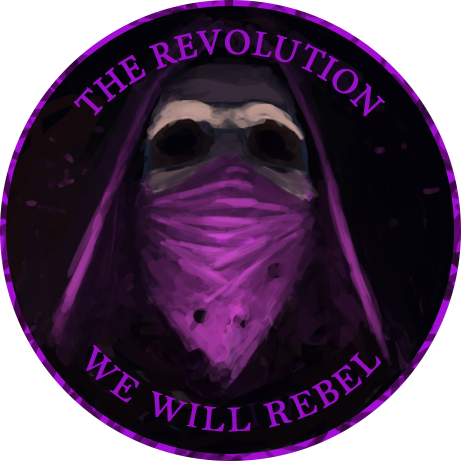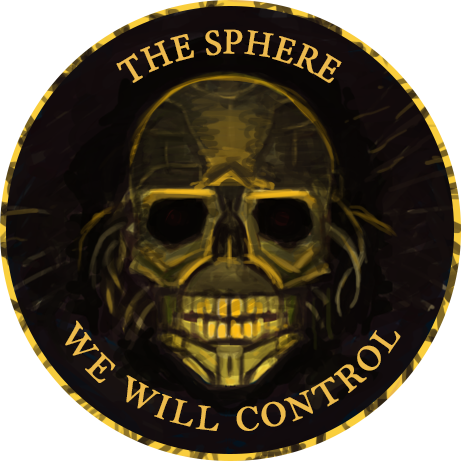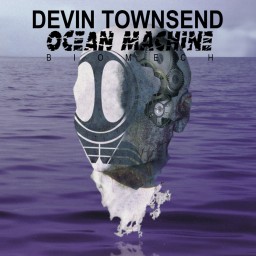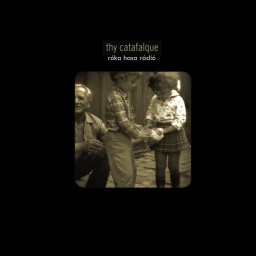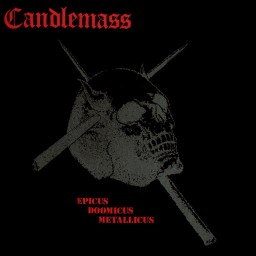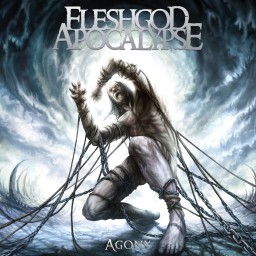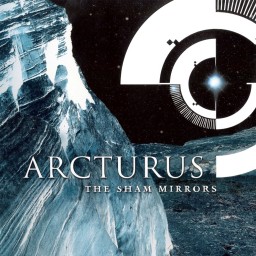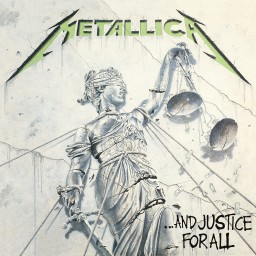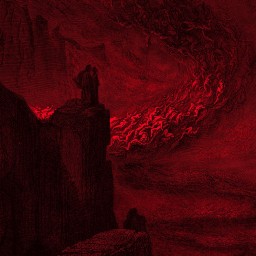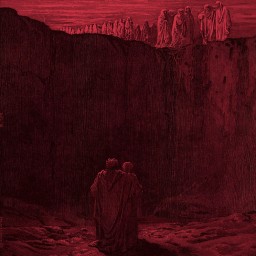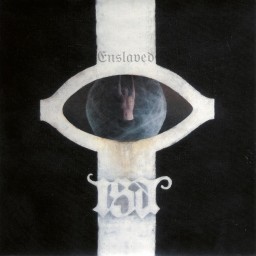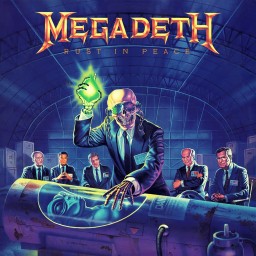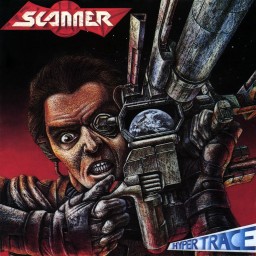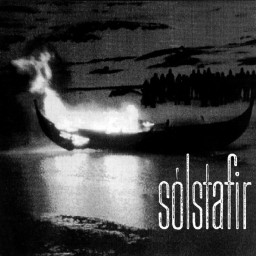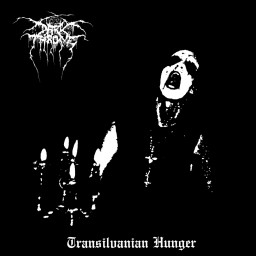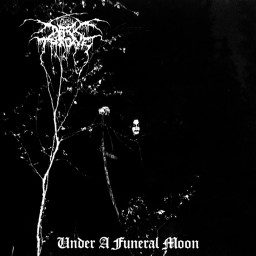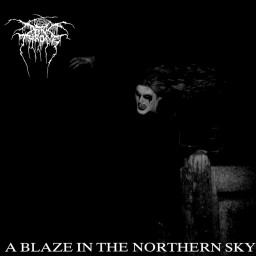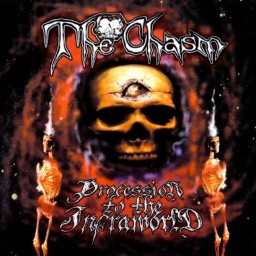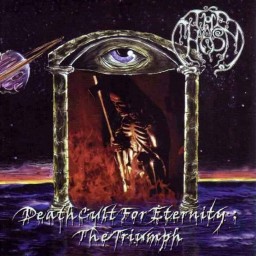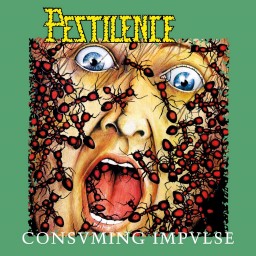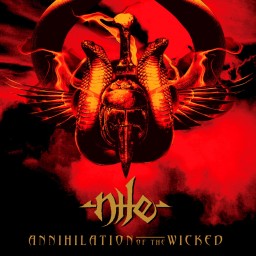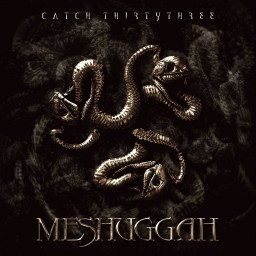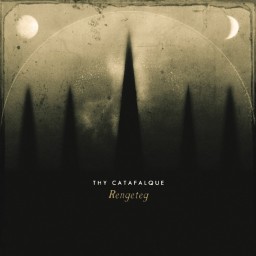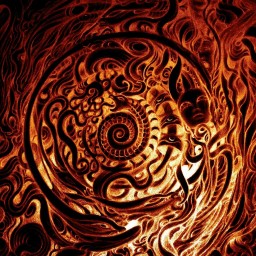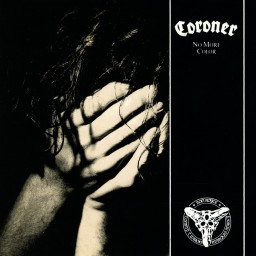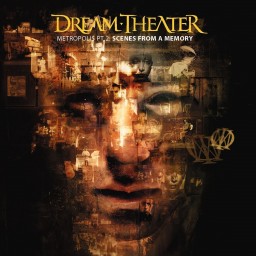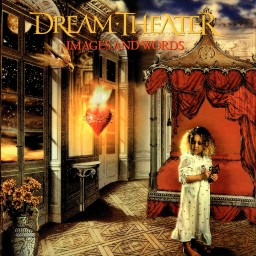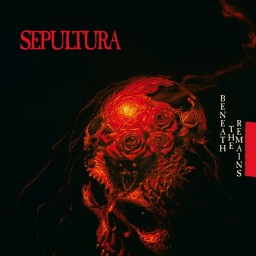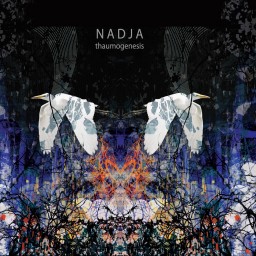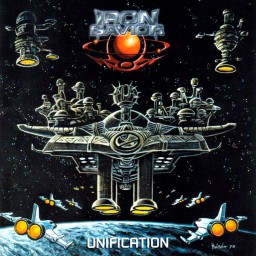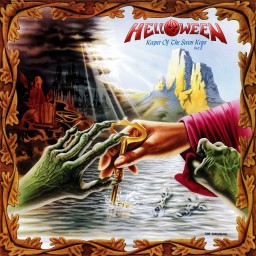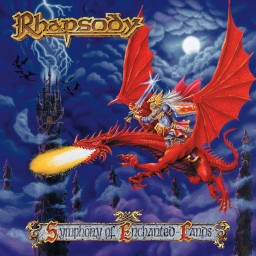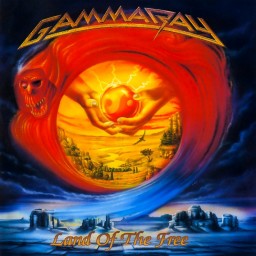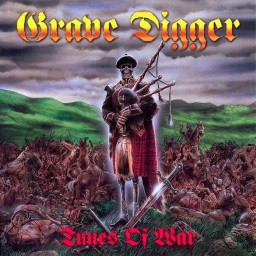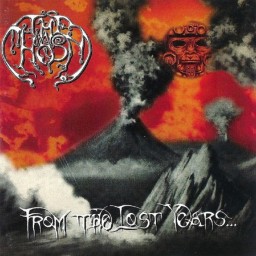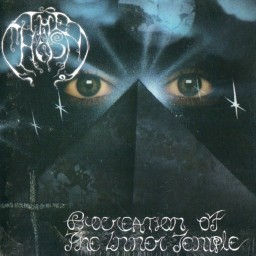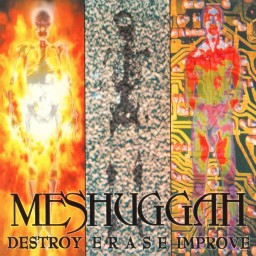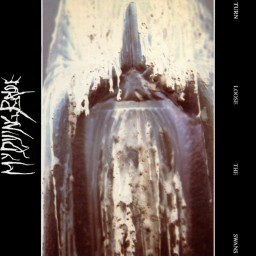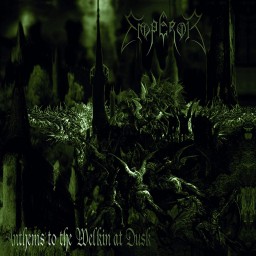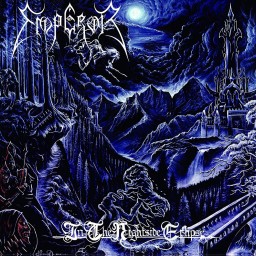Rexorcist's Reviews
Biomech is a strange case for a number of reasons. First of all, there's the fact that this is actually a solo album by Devin Townsend. Second of all, this is tagged as a prog metal album when it's less prog that Dream Theater (except maybe in the Pink Floyd way), and its behavior is more akin to industrial and shoegaze. Third of all, it's so unique in its extremely aquatic sound. Despite being a part of a genre that's known for its aggression and maniacal behavior, this album is all about longing and empowerment. "Life" is the best example of of the album's tame but anthemic nature, carefully balancing melody with atmosphere on a constant basis. The album also uses static-driven spoken word in a few places to keep the fairly technological behavior that one would assume from the band name. In fact, one could almost label this an industrial metal album due to the repetitive nature of the melodies and the mechanical production. Just listen to songs like "Regulator" and "Night" and tell me there isn't a more-than-noticeable industrial mentality here. But this aquatic atmosphere is also very 90's-2000's, sounding like any of these songs would be the best on the Titan A.E. soundtrack if they were included. And because the album is more atmosphere-focused than melody-focused means any great melodies are scattered in place of noisy, aquatic ambiance.
I'm a bit surprised that this is considered the best Devin Townsend album. I've heard a few of them and I have to say that every great thing about this album has also posed a problem in other better and worse metal albums, so why shouldn't they be problems here? Because these elements all flow so well together, they create an atmosphere that's difficult to replicate. But the problem is that the album is essentially doing this same great thing for 75 minutes. The only real change of pace is the new-age-style track Biomech. So while the album is certainly one of a kind, it's overhyped and mistagged.
Genres: Progressive Metal
Format: Album
Year: 1997
It's bands like Thy Catafalque that keep the metal world interesting. While most metal bands want to focus on being as heavy as possible, these Kungarian metal masters take an unconvential route and focus more on taking the listener to strange new worlds even Picard didn't discover. And while Rengeteg might be their best album, the preceding album, Róka Hasa Rádió, is more surreal.
Róka Hasa Rádió constantly switches from the raw heavy metal energy and the surreal instrumentation and the dreamlike soundscapes constantly, many times within the same song, but with the proper build-up effect, so that there's never any inconsistency. And falling back on old tricks isn't much of a problem for this album since it oftentimes has new ideas which build off of old ones. Sometimes there are songs that focus more on a surreal, charming atmosphere like "Piroshátú," which kickstarts Side B. The astral sound effects used to bring the atmosphere to maximum potency ring of Metroid, and at the same time pair flawlessly with the Hungarian folk elements when they appear. But songs like "Köd Utánam" will mingle occasional robotic or sci-fi effects with Hungarian folk while blasting through death metal instrumentation.
There is only one real problem with the album. Each song focuses on drawing out the atmosphere through repetition, which occasionally gets a little old, though still enjoyable. And as a result, its constant usage of 4/4 timing makes it feel less avant-garde and prog than it propably should. Nevetherless, I'm pretty sure I'll come back to this album eventually. It gave me a lot to enjoy and a lot to look forward too once I was certain it wouldn't run out of new tricks.
Genres: Avant-Garde Metal Progressive Metal
Format: Album
Year: 2009
The whole "epic metal" thing has been a staple of cheese ever since metal became a popular genre in 1980, and a large part of that is speed and precision. Thankfully, somebody decided to take the more Sabbathian route and focus on the very same aspects of the Sabbath debut that made it so beloved, as well as later Sabbath Ozzy works. Candlemass recognized that metal fans who stuck with their Sabbath loved the slower bits as well as the faster ones, and now we have a new genre to go with it. This slower music would even help influence the same bands that loved their sludgy punkish Melvins.
Now a person unaware of their reputation online might take one look at the album's Dog Latin name and think, "Wow. These guys must be a bunch of losers. They're not even taking the album seriously." Well, here's a shocker: serious is the only thing this album is. Thanks to sticking with the ideals of doom, darkness, death and funerals, this album has absolutely none of the cheese that's normally attached to metal. Each song is a long and focused trip into the world of ghosts, reaching our deepest emotions through a 45-minute constant of despair, a frightfully accurate recreation of the desire to end it all. Now unlike the original Sabbath works, I have to take points off for staying in the same basic sound for the majority of the album. But a perfect sense of the brand of darkness it's going for makes this one of the most essential albums ever made, as many bands were influenced by it for all the positive reasons.
Genres: Doom Metal
Format: Album
Year: 1986
After hearing the first two releases of Fleshgod Apocalypse, I was getting slightly tired of the technical side of their early music because it wasn't very unique. I was looking forward to the symphonic sound of Agony, which apparently redefinied their music for their future releases thus far. And when the opener, "Temptation" and its follower, "Hypocrisy," made a point of keeping the symphonic vibe strong, I was pleased for a little while. Symphonic death metal certainly has an edge. However, without the technical ide of the early music, all that can be really said is that the album is heavy and it has a few decent rhythms. Otherwise, it's a pretty samey album relying on a single gimmick, and soon the symphonic edge gets a little tiring. It's still heavy and moody enough to be enjoyed by the average death metal fan, but with only one trick up its sleeve it gets a bit overdrawn.
Genres: Death Metal
Format: Album
Year: 2011
I remember having heard the black metal bedut of Arcturus, Aspera Hiems Symfonia, years ago. I hadn't checked out any of their releases after that because I was in a black metal mood at the time. Well, I've gone over countless metal albums in recent times and I finally got around to checking out La masquerade infernale, which had plenty of brilliant moments, but was a bit of a hot mess switching from serious metal to opera to circus music. But The Sham Mirrors was one of the most consistent albums I've ever heard, and it managed to do everything advertized. It was a very dramatic piece in mood and atmosphere, but it never reached the symphonic bombast of a lot of symphonic metal acts, using it sparingly and accordingly. The album boasted plenty of odd tempos to keep the avant-garde side strong and healthy, backing sound effects to help the unique mood of the album, and plenty of fantastic rhythms to keep the metallic status strong. The production of the album brought out all of the best aspects of the aforementioned elements, and as a result we have one of the most accessible but yet weird and wild avant-garde metal albums of all time. Even Maudlin of the Well and Thy Catafalque have problems balancing experimentation with consistency. But with The Sham Mirrors, Arcuturs had corrected the biggest and most obvious mistake on La masquerade infernale. This is serious metal with a passion for oddities.
Genres: Progressive Metal Symphonic Metal
Format: Album
Year: 2002
It's about time I reviewed this album. Metallica is my number one metal band, but it's been ages since I gave this whole album a spin. Part of it is that I prefer the more atmospheric production of Ride the Lightning and the catchiness of Master of Puppets. But I really do love a good prog album, and easily find myself making up proggy rhythms on a daily basis for fun. Honestly, I haven't been living up to my status as a Metallica fan, and I need to at least memorize a couple of the lesser-known songs from this album. So since I've been doing a lot this week, I'm taking a little relaxation today to just chill and re-evaluate this album, instead of going through some jazz to help with a couple lists I'm working on like usual.
This is basically Metallica's "hey, look what we can do" album. No joke. This whole album was about showing off. Don't believe me? Listen to "Blackened" and tell me its outlandish and outrageous behavior doesn't bring to mind Frank Zappa. We have pieces of 3 different songs taped together in a brutally bold and experimental thrasher that challenges any aspiring guitarist's mental capacity while remaining as catchy as it is intriguing. And that's within six minutes. The title track is different. it's slower and more melodic, going into groovy and even solemn solos like these nine-minutes are just another three. I had accused Master of Puppets of being bloated before, and still say that it feels as such when compared to the shorter Ride the Lightning, but this one song fixes that.
"Eye of the Beholder" barely has any progressive behavior to it, largely encompassing the time change in the chorus. Otherwise, it's about as proggy as the least proggy songs on MoP. And up to that point, it's the shortest featured song (by ten seconds). It bears an almost groove metal sound. Ironically, its repetitive main melody combines perfectly with the more healthy melody of Hetfield's lyrics. It would stick out like a sore thumb if not for the usage of the same instruments, tones and emotions of the opener. it's a straightforward song that acts as a reminder that you're listening to Metallica, and not some heavier King Crimson knockoff. Good choice on their part, and a good justification for the simplicity in comparison. This decision brings to mind the lowering levels of heaviness in side A of Ride the Lightning, where For "Whom the Bell Tolls," track 3, was barely grasping the thrash tag for love of gothic poetry. So while this song is still a great one, it's probably the worst thus far, whereas the same can't be said for For Whom the Bell Tolls.
And now for "One," which is the big hit from AJFL. As is standard for Metallica albums at the time, this is the point where the ballad behavior comes in. And this one's serious about that singer-songwriter guitar style. The acoustic and electric effortlessly mold into a serene but chilling intro into a lyrical memory of war. This song is a heavy reminder that Metallica are just as lyrically relevant as they are technically. Of course, the band was never afraid of bringing the ballad into a heavier realm. We have breakdowns for the third act, and after what we just got, this turn of events brings our despair into anger and potential insanity. This slow and simple behavior expands into hyper-velocity hypnotism that takes us on a metronomic journey through an explosive battlefield via aural presence rather than lyrics. Eventually, it just jams and rocks it like a tux.
Disc 2 begins with "The Shortest Straw," which kicks off with tribal drumming and riffing with a slightly industrial approach in its composition. But afterwards, its song structure becomes more typical and even dives into the heavy jamming of speed metal bands like Venom and Exciter. You can sense some punkish energy coming from Hetfield in this one. Kicking off the second disc with a more blatant "speed / thrash hybrid sound as opposed to pure thrash was a good choice. After it seemed like all of Metallica's tricks had been used up on this song, you may have forgotten the speed metal they dabbled in since Kill 'Em All. This song is also the most melodic and riff-oriented song so far. There isn't any time for repetitive riffs after the short intro is done, until the third act. It's all about boasting that jamming you know rock and metal for. The third act goes back to the behavior of the intro with a guitar solo attached or about 30 seconds before the final verse. Honestly, for its more poppy and speedy sound, this feels like one of the most (but not THE most) creative songs on the album. It made me hyped for what was coming next.
"Harvester of Sorrow" is a favorite among Metallica fans, but up to this point, I'm ashamed to admit that I had no recollection of it until it came on. Lars was back to standard Metallica behavior as a gothic tone took the intro and slow and steady took the rhythm with haunting backing effects. There's a powerful evil edge in the slow pacing. Makes sense considering the lyrical content is about a man snapping and abusing his family. This is maybe the darkest song so far. If it were speedy, and had more background detail, it would likely lose its potency. The weird thing is that it's the shortest song so far, even though its potential could've been expanded on considering the overly experimental quality of the intro, so it's a bit of a shocker to me that this song didn't have an extra two minutes attached for some weirder directions. But, it still never lost its power. Lyrically, the subject matter reminds me of the first time I read about a father murdering his family, the father of young actor Judith Barsi.
Now at song seven, I had decided that since only two songs out of six fit the prog bill, I was hoping this next song would fix that and get back into the prog game. "The Frayed Ends of Sanity" begins with a metallic version of the guards' song in Wizard of Oz. Better than when Septicflesh wrote the song "Communion" and accidentally did a symphonic death metal variant of the Meow Mix theme song, right? This song goes back into the most standard behavior one expects from Metallic and sounds like something right from Master of Puppets. It has more melodic and rhythmic capacity (more notes) but despite its strong grip, it's not quite as dark as "Harvester of Sorrow." But since it sounds like a recreation of the previous album, I still give it points for unpredictability.
Now we get to some real craziness: "To Live Is to Die." This is normally the part where Metallica whips up a nine-minute instrumental epic. As an acoustic solo is overtaken by a simple metronome of deep and heavy drumming and sluggish riffing which Melvins would be proud of, one immediately comprehends that the black distortion of "Blackened" may return. Its jam factor largely follows suite for a few minutes allowing the song to slightly mutate overtime in its own repetition. Eventually, it caves into the somber side of the word, "epic," but never breaks tradition or goes into Hans Zimmer territory. Halfway through, our metal does become quite and give us a slight bit of violin, following the metronomic pattern of some pieces of this song. And we end with the song getting more quiet and melodic overtime, representing a full mutation. So we have a perfect balance of simplicity and complexity here, as this song shows the band is proud of the changes they put it through for nearly ten minutes.
The final song is the fastest, nastiest and the shortest of them all: "Dyers Eve." It bears the temple of "Fight Fire with Fire," starkly contrasting with the previous song's ending and bearing connection to the first half of "To Live Is to Die" via genre. It's a beautiful clash of styles that even further justifies the album's creativity over more than an hour. This straightforward thrash song recalls the desperate attempt at heaviness that most early thrash bands were trying to achieve, being known for breaking the sound barrier of metal rather than being known as great songwriters. And this album recalls Metallica's success at combining both approaches to metal.
I'm actually very happy about this decision I'm about to make: And Justice for All is more suitable of a metal album for me than Master of Puppets. See, Master of Puppet's relationship to Ride the Lightning makes the album feel a bit bloated with its extra ten minutes, raising RtL's 45 to 55. But And Justice for All is constantly changing the game and manages to overcome this behavior while adding ten again. It's 65 minutes of variety. The band never changes their instruments or expectations, but becomes a more technical and progressive band at the same time. And Justice for All shows Metallica not only having further mastered their signature sound, but going into stronger variety. Unfortunately, all of this was still beaten by the fresher RtL. But this album has its own edge that has earned its place among the "Best Metallica Album" debate which RtL currently seems to be winning. Many would debate RtL verses MoP and laugh at those justifying The Black Album. But in recent times, AJfL has been resurging in popularity, and it perfectly deserves it. No longer may those who grew up with conventional songwriting knock this album off for being too weird. So I'm lowering my rating and position for Master of Puppet swhile raising both for this one.
Genres: Thrash Metal
Format: Album
Year: 1988
The Hell debut was a good album, but it didn't offer anything new. From what I've heard, Hell II is considered to be the second worst of the four released Hell albums, but I plan on listening to them in order to see how Hell produced as a band, and hopefully to see more value in the drone metal genre. After playing it, I realized I finally found a drone album I would BUY. And I don't even buy my favorite albums since I get most of them online. I would buy this to support him. However, I warn you, this album is not for the faint of heart. Do not listen to this album unless you've mentally prepared for the apocalypse.
The opener, "Gog," lasts a third of the album. The first thing I noticed was that the heaviness hadn't suffered, and I started thinking of Electric Wizard, specifically the album Dopesmoker. The black metal vocals and drumming helped make the opener a little more unique than the guitars would let on, and I welcomed them before I even noticed I had, almost like it was second nature to expect something new this time, as I hoped for. But the vocals soon became some of the deepest, and most monstrous growls I have ever heard. Honestly, that kinda scares me. It didn't even sound like he had altered his voice with tech. And this was just the first fifth of the opening 20-minute epic. I have rarely heard an album that describes darkness so well, even in four minutes. After five, it became a mix of doom and black metal, and I was really eager to see what would happen next, but patient and would leave the album to do its thing. I was putting my trust in it to constantly progress. This is drone mastery, as well as some of the most spirited metal I've ever heard, and they say number III is better. Even as it went back to being the sludgiest sludge ever, I still felt the black metal power creeping on me. Seamless transition from one metal genre to another seems to be the defining trait of this slow-burner, Hell pun not intended.
Then came the following track, "Umbilicus," and I checked to see that it was only eight minutes. As the brutality assaulted me with M.S.W.'s black metal vocals aiding the incurable fuzziness, I felt disappointed that this track would only be eight minutes long, so I enjoyed the brutality as much as I could. That keen mix of death doom and sludge with just a hint of prog was... too heavy to pass up, but the actual songwriting never once suffered. The song offered me one surprise after another, and I enjoyed every repeated melody, knowing that M.S.W.'s sense of timing was worth it. Once again, after the actual melody ends, the album shifts into a loud drone solo mixing ethereal ambiance with a frightful occultism as faint tribal drumming brought the beat up. Genius work. But this noise dissipated and in its place came a Sabbath-style melody with no drums attached: all strings. If I ever got the chance, I would play this shit for Ozzy. And it did turn into sludgy drone again, and the two elements complimented each other like they were fucking brothers. The eight minutes was worth it.
Suddenly, the music stops, and the third track begins: "Metnal," starting with the exact same kind of stoner doom you'd expect from Electric Wizard's heaviest songs, but including a black metal melody overtime. This songs lasts a satisfactory fifteen minutes, so I knew I was in for another wild ride. And occasionally there are slam death growls mingled with the black metal vocals. SLAM DEATH SQUEALS. The album treats the mix of stoner doom and black metal like it's absolutely nothing, and then suddenly we throw slam death into the mix? What in the actual fuck!? And now we just stop and go into a lightly symphonic drone with a hint of Eno-style ambiance! What's next! The jazzy electronica of Vangelis's Blade Runner soundtrack? Nope. Scratch that. A heavily melodic acoustic work. Does it feel out of place? Slightly. Very slightly. It carries emotion over fairly well, and once it transitions to powerful black metal, it feels like a proper introduction to the second half of the song. And once that ends, it's back to the acoustica. Agalloch rings heavily in my mind, except the glory of nature isn't here to comfort me. The listener is still stuck in a mental image of hell. And as expected, we go back to the beautiful black metal, but with a different and heavier melody, before devolving back into the stoner doom, but with more sludge. As we go back to the defining sound of the first act, we get a slight hint of symphonic dungeon synth to help make the ending a little more epic before devolving into a droney and perfectly fitting outro.
The final track, the fifteen minute "Trucid," begins with the same kind of post-metal intro you'd expect from Agalloch or Solstafir, relying more on emotion and repetition with light hints of melody to bring out the raw emotion, but tamely and softly so as not to overdo it. New, but fitting. As expected, but to no dissapoint, it very careful evolves into an explosion of raw power, offering a few fake-out build-ups in the background with deep drone guitars before the loud and fast-paced black metal takes over. Going from slow post-metal to untamed hyperactivity like it was nothing and adding a doom melody in the background was the perfect way to go about this sense of transition. And the next transition to take over is an incredibly fuzzy, heavy and drug-ridden rhythm of repetition and anger that can only be described as true metal. But once another drone midtro kicks in, we go back to the post-metal melodies but with greater speed and a higher sense of melody, almost like a band of travelling minstrels. Somehow, this fits into the album, and I can't explain how. Maybe the deep sound of the acoustic guitar taking over? Either way, it fades out into more drone and black metal, just letting the sound carry away the raw apocalyptic feel of the album. The wailing of the singer defines it all perfectly, crying in pain for his lack of salvation. The album ends where "Trucid" began, with a dark and melancholy post-metal riff reminiscent of Agalloch or Solstafir.
This is what the apocalypse sounds like. Honestly, this is probably the single heaviest album I've ever heard. There were times it pushed the buttons of diversity, occasionally ringing into softer acoustic music, but that didn't stop anything. If anything, the fact thatM.S.W. could pull it off only proves how much focus on the art of metal he put into this album. The album covers a plethora of metal genres, all of which hit extremes unlinke anything I've ever heard.
The debut might've been just another good sludge album that wasn't too special, but this was far from generic. Hell II combined the steady timing of Dopesmoker and the hyper-consistent genre-hopping of Burnt Offerings and cranked both up. In terms of quality, I'd put this somewhere between Burnt Offerings (the high) and Dopesmoker (the low). Hell II redefines sadness, anger, moral lapse, drugs, timing and atmosphere And a big part of me believes that I may not succumb to the conformism of favoring Hell III once I get to it. This album isn't just an album made by an act who nicknamed himself Hell. This album is HELL, the perfect representation, a spiritual soundtrack to Dante's Inferno. The only potential flaw I can think of is that this might be too much even for some drone / sludge / doom fans, because this is the scariest album I've ever heard, even more so than Massive Conspiracy Against All Life by Leviathan. This album is the incarnation of slow metal, always getting the timing and diversity down perfectly. This is everything I look for in metal and holds true to every standard I set for the greatest music albums ever.
Genres: Doom Metal Sludge Metal
Format: Album
Year: 2010
Hell III is basically a continuation of the misery and insantiy displayed on the beautifully diverse and highly consistent second album, which makes for a perfect aural transition of the fear of being sent to hell. This album is shorter, sweeter and more to the point at the expense of some of the extreme metal and more of the post-metal.
Hell III starts out similarly to the ending of the last album with the opener, "Mourn," kickstarting a heavily melodic post-metal tune before allowing the album to slowly emerge from a calm melancholy to pure sadness, and that's when a black metal melody of brutally heavy proportions, thanks in part to the production, massacred my ears. As the sadness developed into anger, the anger soon turned into the fuzziest doom metal in existence. Electric Wizard can fuck off. And as the rage slowly turns into a patient despair, the drone combines with the doom again to create a hellish atmosphere with occasional backing effects that sound occasionally like religious undertones such as a deep choir in the background. Eventually the drone turns into a tornado of howling winds and foghorns groaning into the cloudy night. These groans kickstart the third act, but the instrumentation of the drone aspects and the horrific vibes are top-notch. But it never allows itself to become too slow. Soon, the winds of despair bring back the acoustic melodies of the intro, bringing us back into a circle. It was too perfect.
The second half of the album, and the second track, "Decadere," continues where the first song left off, but with less melody and more despair, and decides to take a violin to the mix to help amplify the dronish aspects of the album. The post-metal/post-rock vibes continue for a while, calming the nerves after such a moodswing of a first half. I admit, I didn't expect the opening melody to just fade into nothingness before rising again, as if it was a different song entirely, but something about the fade-out brought me at ease, and I wasn't really disppointed when it started up again (although I was hoping for a blast of doom metal), but the way in which it was incorporated was brilliant, allowing it to mold right into the post-metal with some beautiful symphonic female singing being just audible enough to be enjoyed, barely struggling to match up with the incredible doom, and switching between that and the black metal vocals. When the drone finally kicks in, we've got more effects, better production and some samples of barely audible speeches in the background, all for the purpose of the apocalyptic atmosphere. This is the kind of thing Neurosis did for their album Through Silver in Blood. The sample goes on as we go back into the post-rock solos, but we as have slow symphonic sounds to upgrade the religious connections of the apocalyptic setting. And after that, we're back into the doomy sludge with another flawless transition, and as the black metal elements kick in again, the album reaches a level of musical and emotional heaviness that I'm not sure the world will ever see again. And somehow there was still five minutes left in this album? The black metal and doom metal work together to follow in the rhythmic footsteps of the post-rock solos and eventually quickly devolves into silence, leaving behind three minutes. And once again, an acoustic melody plays, this time to another barely audible sample which I can only imagine is someone talking about some sort of doomsday event, or disappointment at politicians or some crap like that. But the drone influences are still strong.
I honestly can't believe what I just heard. I can't believe someone actually made this. This is everything slower metal bands want to be, and M.S.W. made it look so fucking easy. The heaviness scratched the edge of the universe, and the genre-hopping was just as healthy on this album, and the melancholy and anger were perfectly expressed. In 37 minutes, M.S.W. took everythnig about his last album and slaughtered it. This and the previous album are perfect examples of what metal needs to be. This is only second to, well, the second Hell release.
Genres: Doom Metal Drone Metal Sludge Metal
Format: Album
Year: 2012
Enslaved were one of the first bands I got into when I first explored black metal. After Immortal and Ulver, I would specifically seek out more non-satanic bands for religious reasons that I have kind of steered away from, having heard quite a ew bands who dive into satanic lyrics. Enslaved are different in the sense that they;re more "mystical" than demonic, but I still heard quite a few of their albums. When I first heard Isa, their album after their most popular release, Below the Lights, I loved what I was hearing. But now I have so much more black metal to compare this album to, even aside from the many Enslaved albums I've heard. And my consensus isn't quite the same. While Enslaved have shown moments of brilliance, this album is pretty standard for black metal. The guitar riffs and melodies don't even hold a candle to the stuff from Below the Lights and Maurdrum, let alone their acclaimed debut. We have standard talent from a much more talented band delivering only occasional surprises that are nice to hear, but far from amazing. And the proggy nature they're trying to build up is pretty simple and hardly that engrossing. I had just gotten done with Terria by Devin Townsend yesterday, and I have to say that, while this album is certainly proggier than the mistagged Biomech, it's certainly not better prog construction than Terria. Overall, my second play of this album ended up disappointing me, even though I still kind of enjoyed the album. Enslaved have never done a bad album, but since this album underwhelmed me so much on the second listen, I have to say this is probably the worst of the Enslaved albums I've heard.
Genres: Black Metal Progressive Metal
Format: Album
Year: 2004
First, let me point out that I am not a big Megadeth fan, and that five minutes before writing this review I found out that the neoclassical Marty Friedman joined this band right after the release of his debut solo album. And the Friedman shows in guitar-driven songs like "Hangar 18." The real reason to check this album out, however, is that incredible metal atmosphere, switching the severity from pure heavy metal like "Lucretia" to some of the thrashiest thrash metal like the short and sweet "Take No Prisoners"and "Poison Was the Cure" and some very prog/tech moments scattered through the whole. Lyrically, much of the album deals with post-apocalyptic dystopianism, the kind of thing you'd expect from movies like Twelve Monkeys or Dark City. But there's always a little room for that cheesy fantasy stuff, like in "Five Magics," which switches from slow fantasy metal to thrash pretty quickly. And sometimes we get unbelievable speed-based jammers like "Tornado of Souls," the most appropriately-named song on the album.
But is this album perfect? NOT QUITE, but it is close. The problem is that it's TOO unique. Sometimes the experimentation gets in the way. The progressive behavior of the opener, "Holy Wars," was fine, but why does "Hangar 18" even have two lyrical verses if the other 80% if going to be tech-speed wankery? Why bother acting like a sing-along song (this is heavy metal we're dealing with)and then go "PSYCHE!?" It's because of that that I find the best songs to be "Holy Wars" and "Five Magics."
Honestly, the production, quirkiness and Friedman solos are so damn good that I really want to say this is absolutely perfect, but there's that one flaw with the overplayed and overrated Hangar 18. But it's still an incredible album in every other way, and I'd go as far as to say any metal collection would be incomplete without this. Megadeth proved themselves to be a forward-thinking band before they ended up becoming a straight heavy metal band on the next album over, the same way Metallica did. And Megadeth aren't quite as good as Metallica, but this album deserves its well-earned special recognition.
Genres: Thrash Metal
Format: Album
Year: 1990
I've heard this album twice and both times I had the same opinion: Scanner's debut stands out from the rest of the power metal world for truly mastering the sci-fi vibe without needing too many electronic sound effects. Lyrically, the album hits the cyberpunk vibe right in the red dot, from the laser guns to the politics to the mythos. "Warp 7" sounds like the opening to a real sci-fi movie from the 80's, and all of the songs follow in that vein just fine, switching from simple jams to freedom anthems in the vein of Gamma Ray. If I had to fault the album for anything, it's that the album really isn't as heavy as other speed-power metal hybrid acts like early Helloween or Running Wild, so there's a faint feeling of simply just following in a scene for the sake of easy fame. The production doesn't do any favors for the drummer, and as a result the guitarists and the vocalist have to fill the void. Otherwise, this album is perfectly fine and should be checked out by any power metal fan.
Genres: Power Metal
Format: Album
Year: 1988
Solstafir have proven themselves a couple times to be post-metal geniuses. Ironically, the similar black metal genre seems to be their weakness. Early Solstafir demos aren't exactly worth looking up unless you're THAT big on them. Their second extended play, Til Valhallar, is a 20-minute EP of generic black metal that doesn't really do anything for me. These compositions have been done before by better artists with more flair. It's as if the band didn't care about the music at all, and just decided that black metal was an easy enough genre to make and get instant success. You know? Harold P. Warren said that same thing when he made the movie Manos: The Hands of Fate. Of course, this EP isn't Manos bad, let alone "bad," it's just another passable black metal album that's only good enough to get by. All it really has to its name is a decent level of heaviness. It's an OK EP, but stick with the studio albums.
Genres: Black Metal
Format: EP
Year: 1996
I never once expected Darkthrone to try and get more creative again after the samey and monotonous tertiary effort, Under a Funeral Moon, following the otherwise genius Blaze in the Northern Sky. The most I could hope for in the instance of Transilvanian Hunger, the third in the classic string of post-debut Darkthrone albums, was that the production values were improved from the bad kind of lo-fi that drowned out the power of the percussion, as opposed to Blaze's lo-fi which improved it. Thankfully, I got my wish in that department, but I also got what I expected. These songs are all about molding anger and melancholy into one whole, album like a bunch of angry ballads. There's a very strong atmosphere which the lo-fi does a better job with, making the percussions almost sound like heavy rain. It could still be heavier, but it also worked for the atmosphere it was going for. The writing was a bit better as well, featuring better riffs and rhythms. Unfortunately, it was still a case of many songs basically doing the same thing or things. This tells me that I'm never getting another Blaze in the Northern Sky from the very band responsible for it. I know I'm probably going to get some slack for ranking two of the three most classic Darkthrone albums among their modern works, but dammit I want my Blaze Pt. II.
Genres: Black Metal
Format: Album
Year: 1994
I've been listening to extreme metal whenever I wanna tune out certain noises whether inside or outside, and recently I had re-evaluated Darkthrone's A Blaze in the Northern Sky along with Blut aus Nord's Hallucinogen, three Emperor albums, the Gris debut, etc. etc. Even with worse headphones that I use for outdoor stuff, Blaze incredibly creative, dark and intense, standing with many of the giants I just named. Now I could get behind lo-fi production for black metal and I love it when it works. But in comparison to Blaze, Under a Funeral Moon is much worse to me. That creative writing and absurdity that made Blaze surreal is completely gone, taking away a large portion of Darkthrone's personality and making the music generic. The lo-fi production is actually getting in the way of the percussions displaying full force, also making it generic. This especially hurts when we're dealing with much longer songs like the eight-minute To Walk the Infernal Fields, which barely takes the time to do anything unique or inspiring until halfway through, with less effect than the wonderful opener of Blaze. This might be an early keystone for the development of black metal, but everything about this album is only half as good as what was on Blaze. Strangely enough, this re-evaluation also makes me happy to have another hot take.
Genres: Black Metal
Format: Album
Year: 1993
I've been going through an extreme metal binge in order to drown certain noises out and help maintain my sanity during some stressful times, and the black metal has been seriously helping. I mentioned in an earlier review that I've been re-evaluating a lot of classics, so I decided it was time to go back to Darkthrone, a band that some consider to be the best in their scene. With an incredible piece like A Blaze in the Northern Sky, it's no surprise that they're so beloved. That album was the first of several Darkthrone albums to help set up the basis for many imitators in the future. A magnificent opener like Kathaarian Life Code can just send you to hell and back with a few interesting stops along the way, challenging the very notion of metal by reflecting darkness in a multitude of ways. While the majority of the album focuses mostly on the black metal sounds, the album progresses in many catchy and sometimes brilliant ways that remind you why people love it so much. There's some more deathly moments, some flat out catchy moments a bit like speed metal, a little extreme hardcore on the side, and some true melancholy. As well, it was a masterful step forward in proper usage of raw, lo-fi production, and to this day remains one of the best examples of how to do it properly. So this is easily a winner if you want to introduce someone to black metal.
Genres: Black Metal
Format: Album
Year: 1992
The glory days of The Chasm started with their third album, Deathcult for Eternity: The Triumph, which had its strengths but wasn't the legend it was made out to be by some websites. Maybe the big flaw was that it was too long? Well, with the 40 minute fourth entry, Procession to the Infraworld, I knew that wouldn't be a problem. All that mattered was what it would sound like.
I expected so many different things from this album considering what the band had done in the past and its diverse genre-tagging across the internet. But the first thing I noticed was cleaner production. THAT is a very hit or miss thing in death metal. Why it's true that the most famous death metal album, Symbolic by Death themselves, has some of the cleanest production death metal has ever been granted, I've met lot of death fans who prefer the dirty stuff. So the real question was, can this album justify the production with its heaviness or not? Well, either I just wore THAT ONE right pair of headphones, or the heaviness of this album, while not obsessive like Deathcult, was more than good enough to get by.
The opener, Spectral Sounds of the Mictlan, was really just a good instrumental intro that ran for three minutes and did a good enough job. But the magic began on The Scars of My Journey. The instruments were well-produced and well-played, but I found the vocalist just a little difficult to hear in comparison, so there's that. Already not a perfect album, but satisfactory. The song was heavy as all crap, anyway, and the black metal influence mingled perfectly. The audio problem was fixed on the third track, At the Edge of the Nebula Mortis, which wasn't quite as progressive and used its melody more sparingly, which brought out a lot of the thrash factor. So the first three tracks gradually got better and heavier.
After the third track, the high quality stays consistent, as the riffage displayed is nothing short of incredible, especially in Return of the Banished, which handles its progginess and occasional subgenre-shifting perfectly. Unfortunately, around Architects of Melancholic Apocalypse (I actually typed that title?) you kind of know what to expect by that point, despite the fact that the musicianship is still peak musicianship for death metal. So, even though you don't have anymore surprises, you will likely still have a great time.
The production and musicianship of Procession to the Infraworld beats the previous album by a country mile. But the real reason this is such a treasure is because it handles so many different kinds of metal so well and so lightly that it feels like the band can play multiple genres without even noticing. Among the progressive structures we have traces of melodeath, meloblack and thrash here. This is one of the finest death metal albums I've heard, and I'd recommend this to anyone as a good intro album to death metal since it handles so many kinds with peak consistency.
95/100
Genres: Death Metal
Format: Album
Year: 2000
It shoves the heaviness at you instantly, and with better production values the album is all the more effective. Of course, I wasn't in love with the songwriting at first. The opening Revenge Rises/Drowned in the Mournful Blood, starts out with pretty standard riffing, showing nothing spectacular whatsoever. I hate to sound like a “prog rules all” kind of guy, but the truth is the truth in this instance: once the song kicked into prog metal, it was less predictable and it grabbed my attention. In contrast, I liked the opening riffs to the next song, No Mercy. They were wild and untamed, as were the bandmates as they thrashed through the song, even though it sounded just a little messier than it needed to be at times.
The album's quality of writing would fluxuate for a while as we get songs that are just there for thrashing purposes like I'm the Hateful Raven and songs that are there to focus on the music for artistic purposes like Apocolypse. Highlights for me are when songs get incredibly unpredictable but consistent nonetheless, like A Portal to Nowhere, which was a five-star performance as far as recounting everything the album had done beforehand went.
It's quite obvious that this album was successful among metal fans for its raw brutality. The band went from 6-10 on that scale immediately after the second album, and it switched from pure thrashing to quick-thinking and clever songwriting often. It's a good album for the death metal fan and I recommend it. It's certainly heavy and quirky enough to get the job done, although I've heard a lot of death metal that's impressed me, and I'm not sure this would make top 100 death metal for me. Nevertheless, I'll give it a good rating.
87/100
Genres: Death Metal
Format: Album
Year: 1998
As I explored more and more metal in my early days online, some of the giants in their respective fields would typically be moved upward on my charts once I "got them." Now I've fleshed out a criteria so strict that some of these giants are just getting seriously lowered. Today's example would be an album I still consider great on its own merits, but I feel has been slaughtered at the altar by better bands like Morbid Angel: Consuming Impulse. Don't get me wrong, I really do enjoy a serious metal edge here. This is one of those albums that allowed for a perfectly produced take on an otherwise noisy metal genre to reach its fullest power without anything being drowned out. Most of the songs here are somewhere between copies of each other and just different enough to get by, so it's a highly consistent piece with no real variety. Death had already been established by this point, so some more of that would be appreciated.
If you want some raw thrashing for 25 minutes, this is one of the best examples, much like the Ramones debut was for the punk attitude. But both albums are still samey throughout. This is about the same as the Ramones debut to me.
Genres: Death Metal
Format: Album
Year: 1989
After Nile's third album, In Their Darkened Shrines, took the metal world by storm, the upped the heaviness ante with their most popular album, Annihilation of the Wicked. Nile cemented themselves as one of the most capable death bands of their time, but this album ensured their historical status. After having heard this before and heard Darkened Shrines today, I had to play this one again.
Now this album just blasted brutality in my face once its acoustic intro was done and "Cast Down the Heretic" began. This is Cryptopsy level brutality. Of course, the next track, Sacrifice Unto Sebek, followed suite perfectly, without even letting up. Although this is potentially a con considering that their previous album had made a point of displaying the diverse range of their one genre, the fact that they kept the brutality and technicality just as strong while keeping the song short says that this song acts more like an epilogue to our first song. Our next track is the epic "User Maat Re," which starts off with an intro and style similar to the first two songs, so it doesn't feel very original. However, its varying songwriting structures are consistently played throughout the whole nine minutes to keep it original. But when "The Burning Pits of the Duat" started, it was obvious to me that this album wasn't going to change its pace like the previous album did. In other words, it's only going to rely on the band to try and keep the most basic and generic sound that was already pioneered and perfected by Suffocation original. Thankfully, the writing was still incredibly strong.
The album sacrifices much of the mythological and even horrific vibe of the previous album for more brutality, almost like they sold out. But this is an exceptionally brutal album with a lot of raw talent behind it. They obviously didn't sell out because they wanted more brutality and succeeded. But they lost a piece of themselves thanks to the transition, so this almost cosmic vibe about their previous album was gone. But the death metal performances themselves still denoted that this had an incredible amount of effort put into it, so I won't fault it too much. Sameyness may be a slight problem, but some of the finest death metal performances I've heard are here, so I'll still consider it one of their best. But I also feel like there's a bit of a case here like South of Heaven or Pleasure to Kill where the heaviest is considered the best based on that and not on the writing quality.
Genres: Death Metal
Format: Album
Year: 2005
Well, here we go. Yet another exercise in influence vs. quality. The mighty Meshuggah apparently reinvented metal with this album by creating the subgenre "djent," which is an onomatopoeia for the guitar sound they were going for. They had been working on djent for a few albums, but this fifth album of theirs is the one that gets the ladies for being JUST THAT djenty. The genre is built on repeated angular riffs of a nature right in between avant-garde and prog. Now I wrote a glowing review for a djent album that appears on the same Metal Academy list challenge as this: Sol Niger Within, by the guitarist of Meshuggah, Fredrik Thordendal. That was a high creative peak for metal. This? Does is hold a candle? I've heard it a couple of times before, and it didn't. Will it hold now?
First lemme just say that I see ABSOLUTELY NO REASON to write multiple of the same 100-second song and stick them together in a way that acts like pieces of a puzzle such as other prog epics, because the idea of using the same riff for three songs at a time is definitely NOT prog. I compare this to the more diverse Destroy Erase Improve already and there was still more diversity and creativity, while maintaining the djent focus. I mean, don't get me wrong. A lot of the decisions they make are very cool here. For being such wacky alien rhythms, they do a bang up job at being just that with the right amount of personality to remain accessible. After five albums of this, I guess that's to be expected. But still, these guys are a djent band, which means they are a PROG band. I mean, if you're gonna have three 100-second songs and a 13-minute song that sound the same, then you're obviously just fucking around.
Well, this one was pretty cool and all and easy to return to for its powerful persona. But as fare as constructing an album goes, this was a bit of a bust for me. Since it's got its strengths, I'll give it the bare minimum rating for a good album and that's it.
Genres: Progressive Metal
Format: Album
Year: 2005
I don't follow Thy Catafalque very often, but I'm familiar with the way they work. The truth is that I don't entirely agree with the "prog" and "avant-garde" tags, since the structures of most of these songs feel so typical. But that doesn't mean the album isn't weird. Rengeteg's tracks aren't always wild and unpredictable, but they certainly are weird. The first track blasts you with a powerful combination of black metal and death metal, and afterwards we have heavy metal songs with occasional straying into Hungarian folk and dungeon synth, making for a truly Gothic album that plays around with music like an imp trying out different black magic spells. And the more the album plays around, the better it gets. It's probably a lightweight album for people wanting to get into experimental music, but that's what makes it a good introduction album at the very least.
Genres: Avant-Garde Metal Progressive Metal
Format: Album
Year: 2011
Esoteric emerged in the early 90's, quickly invented a new version of the music of Saint Vitus and Candlemass, and since then they've been inducted in the pantheon of doom metal. Their funeral sound has lots of replicators but no equals... or at least that's the story. Truth is, I've only heard a handful of funeral doom albums. But that doesn't mean I don't like the genre at all, since there are plenty of slow-moving metal artists I like, notably The Ocean, Neurosis, My Dying Bride and Solstafir. So it should be no surprise that I enjoy slow doom like Esoteric, and their most famous for its surreal sound is The Maniacal Vale.
Some people read the lyrics as they go along an album with indeterminable vocals. Me, I say, "if it's indeterminable, then it's optional." I decided to look at this album from the perspective of the aura itself and just let it all take me away. "Circle," the opener, made the easy. The 20-minute epic sacrifices melody and rhythm to draw you away into a dimension of deathly energy, lost in uncharted space. You've essentially hit the astral Bermuda Triangle. This is post-metal at some of its most atmospheric. And honestly, I hate it when post-metal songs just play the same note constantly for their riffs. "Circle" does that occasionally, but its atmosphere is so effortlessly thick and dense that you feel smothered. This is what doom itself is supposed to sound like.
And it got to the point where every track on the album was essentially putting slight twists and turns on that same trick, meaning despite the shifting in tones, the album is essentially a very clever one-trick pony. Now this isn't a bad thing if the trick is still very good each time it's played, but I can't help but compare longer albums to other longer albums, especially when a focus on heavy atmosphere is involved. As a result, I instantly compare this to other dark, deathly and atmospheric bands: Swans, Neurosis, My Dying Bride and Sleep. With several of their albums, there's more creativity boasted, even in a longer runtime like the two-and-a-half hour Soundtracks for the Blind. So I wouldn't put this album in the same league as that album or The Seer.
But for 100 minutes of doom metal, each of these minutes is beautifully produced and written, so the album still greatly succeeds at giving a doom metal fan what he wants to hear, especially if he's looking for the funeral sound. It's unlikely that I would recommend this to the average metalhead to start them off in funeral doom. But once they get into funeral doom, they should check this out. They may end up loving it.
Genres: Doom Metal
Format: Album
Year: 2008
No More Color is that benchmark between the accessibility of Punishment for Decadence and the extremely experimental Mental Vortex, and as a result it has everything a real thrash album needs by combining the best aspects of both albums. As a result, this album takes technicality to a new level of catchiness. And it really helps that these guys make heaviness look like an easy feat, and this is coming off of having finished Anthrax's Among the Living just before turning this album on. Ron Royce's monstrous voice feels so authentic that you'd wonder if the guy really killed anyone. Hell, "D.O.A." sounds freaking foreign to our planet, like these Swiss thrashers are really from Neptune or some crapo and they came here to annihilate us. The album actually FEELS threatening despite how much of a jam every track is. In fact, it's safe to say that there are very few albums that can jam this much despite its terrifying presence and technicality. And because the album is so short, every idea the band had in this album has to work with the speed in order to perfect the mood and the presence. I'd say it definitely succeeded there. Listen to "Mistress of Deception" with headphones and tell me that's not the case.
Coroner's No More Color might show the effort put into it, but for the half-hour it runs, it still manages to achieve perfection. I don't know why it took me so long to finally listen to this album by the time I started listening to albums and back in 2020, but this is one of those pieces of work which will show you exactly why thrash metal is so good. This is the rare kind of album where every song can get away with the same goal and presence in mind because the band still manages to show a level of creativity that's hard to even train yourself to get.
Genres: Thrash Metal
Format: Album
Year: 1989
The most popular prog metal band on Earth (that can make up their status) is probably Dream Theater, either that or Tool. Tool is the more proggy band by nature, but Dream Theater is more accessible. The Rush influence became much more obvious once their first metal opera, Metropolis, Pt. II, was released. This album was my entryway into prog metal, and I'm tankful that this album exists. Dream Theater may have gotten worse overtime, but one thing will never change: their classic era is made up of CLASSICS.
Metropolis, Pt. II follows in the same vein as previous rock operas like Pink Floyd's The Wall, relying on psychological storytelling centering around one man's odd, cerebral experiences. But this time, it's more akin to TIME TRAVEL, as the story centers around the concept of "past lives." Not only that, it's a murder mystery. This gives the album a feeling and approach of a noir film, but still manages to be the same accessible prog that Dream Theater is known for. LaBrie carries his soft-spoken voice perfectly through this story, effortlessly bringing out every emotion detailed in the story, and the story never gets in the way of the rhythms or progressive melodies. In fact, they work perfectly together. And this emotion is carried through the album, bringing out the suspense of solving the mystery while still being catchy. Both the music and the story are bound by the common factor of cerebral behavior.
This album, thanks to its incredible story, likely deserves to be the most popular Dream Theater album. The only thing it's missing is that oddball diversity from Images and Words, and the heaviness could be cranked up just a little bit. But taking the mood of rush and combining it with the surrealism of Pink Floyd, and translating both into metal was exactly what metal needed, and it probably came later than it should've. Metropolis Pt. II is essential listening for any metal fan, even if the accessibility turns of prog purists.
Genres: Progressive Metal
Format: Album
Year: 1999
I've lost some of my love for Dream Theater over the years. Metropolis, Pt. 2 was the album that got me into the progressive side of metal, so I had a special place in my heart for it for a while. But after exploring so much prog, I grew out of that album because all of the songs were pretty much trying to do the same thing. Such is not the case with Images and Words, which is constantly trying to reinvent itself. The album is much heavier and more melodic than Metropolis, Pt. 2 ever was, and it doesn't keep the album from being heavily accessible. It's a little experimental, too. Another Day has a sax solo that sounds exactly like Kenny G (although that's not a bad thing in this instance because it somehow fits right in), and Take the Time's first verse has a funky bass solo and the 80's synths you'd get in all those later disco albums or even Prince songs. And let's be honest, the guitar tones of Surrounded belong in an AOR song. It's like the album is deliberately experimenting with the concept of accessibility. If that was the mindset, then Dream Theater did a perfect job.
Genres: Progressive Metal
Format: Album
Year: 1992
So let's take a quick look at Metallica's openers for Master of Puppets and Ride the Lightning, and how they start off with a couple catchy and beautiful acoustic melody before going right into the thrash. While I adore both albums, the acoustic intro of Beneath the Remains SLAYS BOTH. Our opening title track is switching between death and thrash like it's absolutely nothing, and we can expect this to happen a lot in this album.
I'm on this album right now because I am in a serious need for a metal kick after watching some of Lords of Chaos again and having gotten through the new Burzum album, The Land of Thule (kinda lame), and since I still have to be careful about my metal intake in comparison to other genres I want to explore even further, going back to a couple albums I need to review here for the lists is the way to go.
Sepultura are Brazil's dominant thrash band for a reason: they understand what heaviness really is. They display a variety of different ways to bring out the brutality of thrash and death even on Inner Self alone. If you like thrash metal at all, then this is one of those perfect examples of how to endlessly thrash with a constant and never-wavering selection of riffs and rhythms that pretty much keep you on your toes at all times. Since the songs are all following largely the same vibe, it's easy to day that it's not the most original or even groundbreaking release. But since all of these songs are so damn good despite this old tricks, this also makes the album a perfect introduction to anyone looking to get into thrash, or even maybe to slowly break into death. In fact, it also makes it hard to pick favorites out of this bunch of thrashers.
This is a fan-favorite for many, largely because it's their darkest and likely even their heaviest, despite the fact that it's not the most original. I'm glad I came back to this today because I really needed some serious metal energy.
Genres: Thrash Metal
Format: Album
Year: 1989
Power metal may be where my heart lies, but I am in a rare drone metal and post-metal mood, and I plan on utilizing that as much as possible. I previously detailed my venture into the catalog of Nadja, a Canadian band who helped make drone metal what it is, partially due to their heavily packed studio discography. One of the more well-regarded one is the one-hour track, Thaumogenesis. Hey, I've heard Bull of Heaven albums before. I can take this.
At first, the album starts with a lightly more imaginative take on the tropes of drone metal, molding its dark and quite atmosphere with shifting moments of melancholy and surrealism. Within the first ten minutes it had become more than an average drone album. And eventually the surrealism and melancholy would occasionally mingle as the album's overall tone got louder and higher (slowly, though, as it should be). And eventually, I felt sucked into another world as the atmosphere overpowered the living room.
When I checked the time, a half-hour had past. But the beautiful thing is that it didn't FEEL like a half-hour; it felt closer to twenty minutes. So if someone create slow music that makes time fly, you know he's doing a good job. And by the halfway point, this dark and surreal experience turned into a choir of orchestral reverb slowly bringing out the most beautiful moments of the album before shifting into an almost demonic raspy siren of low-tuned guitars that would make my favorite sludge band Neurosis proud. And the shift from one tone to another was seamless and without notice. Genius work on their part. Once this darker atmosphere slowly shifted its focus from the guitar riff to the atmosphere (once again, slowly), the album became a true testament to emotion once again. And after they go back to the riff focus, somehow it goes even lower than low, toning down to a hellish vibe before resorting to mellow acoustic guitar, almost like an attempt to comfort someone after descending to hell, and turning into a piece of ambiance filling the room yet again.
I'm gonna be honest, if there was a drone album I'd recommend as a starting point for exploring the genre, this would likely be it. I found myself really enjoying this. And yes, I prefer the album I heard last night when I was tired, Truth Becomes Death, but Thaumogenesis delivers on its good with a great deal of slow-moving experimentation, making this an effective drone album in the end. It takes a special drone album to get a recommendation from me, and this album gets better as it goes along. I can't say I'm a drone metal fan, but this is one of the two albums that I can say made me a Nadja fan.
Genres: Drone Metal
Format: Album
Year: 2007
I'm slowly getting into drone metal, pun intended, and I'm working my way through several Nadja albums as a starter, working my way up from the decent ones to the better ones to get the strongest idea of what's typically considered great drone. But it's a challenge. Drone is my LEAST favorite genre, and as a result, drone metal is my least favorite form of metal. But this isn't to say I haven't enjoyed or seen value in Nadja so far. After a few of their studio releases, I headed towards their live album, Trembled.
Despite being a drone album, Trembled runs at a brisk forty-five minutes. Perfect for the beginner, right? Well, this album is a little too perfect for a beginner, as the album doesn't really deliver any new good to the drone metal scene. It's a pretty simple piece, giving the listener four soft, ambient tracks that alternate between a doomy-emotional feel and a soft aural melancholic atmosphere, acting as sort of a lullaby for anyone who wants to relax. The latter is especially present in the album's Swans cover, "No Cure for the Lonely," which ends with a collection of higher sounds and drops to the bottom of the scale with a deeper and slightly more experimental track, "Corrasion." But once again, the simple drone structure is delivered with just enough good production and emotion not to be a "bad" album.
I don't want to say Trembled was a "disappointment," but out of the few Nadja metal albums I've already checked out, this is the worst. It offers no incredible melody or sound effects to progress or repeat like the original 2003 version of Touched, and it doesn't have a surprising level of emotion and experimentation like Truth Becomes Death. It delivers the basics right to the core with only a little bit of style.
Genres: Drone Metal
Format: Live
Year: 2006
Let's be honest, Iron Savior are not one of Germany's best.
Iron Savior are practically the sci-fi counterpart to Rhapsody of Fire. Both bands released their debut albums in 1997, and Iron Savior came first by seven months. Now, metal operas were becoming more popular, especially to those influenced by Savatage or Queensryche. It wouldn't be long before every fifth band in the metal world wanted to do a concept album. And Iron avior was one of them. Did that make their music better? Not really. They hadn't captured the sci-fi vibe the way Scanner did in their early days.
If you don't know the story, the debut talks about the history of Atlantis, its war with another race, and the creation of a great battleship called "Iron Savior" which was seized by the enemy and used against the Atlanteans. The Iron Savior was launched into space for thousands of years in a last-ditch effort to saver the planet, but has returned to conquer Earth. Unification is about the humans attempting to overthrow the robot and discovering proof of Atlantis. And this dramatic metal opera is recorded with better lyrics, getting just as much into the spirit of the story and sounding less generically power metal. "Coming Home" opens the album, and it's level of heaviness is unbelievable, slaughtering the Iron Savior debut by staying true to heavy metal brutality and still keeping Helloween's anthemic vibes strong. Of course, those kinds of vibes are needed for a metal opera that takes place during a great battle between man and machine. Especially songs like "Deadly Sleep." Piet Sielck is the perfect vocalist for this story, sounding completely masculine and full of power and energy. And many of Kai Hansen's best solos are on this album. Of course, he's practically the Godfather of Power Metal. Without the necessity for trumpets or pianos, the band creates an operatic symphony on their own. Songs like "Forces of Rage" would make Taro Bando of F-Zero fame proud.
Ther only problem with the album is that all of the songs still sound the same, despite changes in tempo. But if you're not bothered by that, then I recommend you check out this album as soon as possible. This is real metal, and if you like sci-fi stories then pay close attention to the lyrics. This is a pretty cool story.
Genres: Power Metal
Format: Album
Year: 1999
Helloween, the pioneers of power metal, made the genre possible from their early days. Their self-titled extended play was already showing early stages of metal brilliance, but that speed metal album was only the beginning. They had perfected themselves more and more with their albums Walls of Jericho and Keeper of the Seven Keys, Pt. I. And Pt. II cemented their footprints in the everlasting heavy metal hall of fame. Pt. II is everything a metal fan can ask for. While the structures of most of these songs are very poppy, making the album seriously accessible, the metal energy is still very strong. Maybe it doesn't reach the thrashing heights of Walls of Jericho, but the anthemic energy makes up for that. Anthems to freedom like "Eagle Fly Free" and "Rise and Fall" make a full grown man wanna jump on the bed when he's just chilling in the bedroom. But there's also a weird side to it, bringing out Helloween's jovial childishness. Songs like "Dr. Stein" and "Keeper of the Seven Keys" bring out the sci-fi and fantasy that so many power metal bands sought to imitate and build their images off of, but they hardly feel cheesy because Helloween weren't TRYING to do anything, they just did it. And with Michael Kiske's vocal range rising beyond the stratosphere and scratching Heaven, there's no way to resist the band's raw force.
Keeper of the Seven Keys is considered to be Helloween at its most iconic. And while I'm not sure I'd call it their peak, it's certainly something that needs to be heard. This was the first power metal album I ever heard, and because of that I got an early start on looking through dozens of power metal acts. But very few of them could replicate the energy and independence that Helloween stood for during the Kiske era. Purely incredible, and definitely essential.
Genres: Power Metal
Format: Album
Year: 1988
Rhapsody's second album, Symphony of Enchanted Lands, is a power metal fan-favorite for two very good reasons: 1. "Emerald Sword," 2. most of the album follows in the vein of "Emerald Sword." This reason both makes the second entry in the famous five-part metal opera their most famous, but also hurts the album. How? Simple. Did you ever find an album to be monotonous or samey? Unfortunately, half the songs of the album are essentially trying to be sequels to "Emerald Sword," bearing the same tempo, vibe, style of instrumentations, everything. But the thing is, they're following in the vein of "Emerald Sword." In other words, they're songs by the exact same band trying to recreate one of the most powerful and symphonic songs on Earth. As a result, the whole album is loaded with the symphonic power metal atmosphere they themselves invented and perfected more than BLind Guardian ever did. And as a result, we have yet another entire collection of jams that make it hard to resist the urge to get out the toy lightsaber you haven't used in years and pretend you're gonna slay a dragon with a band of metal mistrels at your side.
Most people believe this is the best album of Rhapsody's five-part album series, and their best in general. Well, I'm different. I believe it's the worst of the opera, but I do NOT, I repeat, NOT believe that this is their worst album period. I actually started their sixth album and got bored, so I shut it off. Because Symphony of Enchanted Lands is so accessible, it makes a great entry point for anyone looking to explore symphonic metal.
Genres: Power Metal Symphonic Metal
Format: Album
Year: 1998
Helloween may have been the ones to pioneer the anthemic flow of power metal by singing about freedom and independence, but Gamma Ray were the ones to tell stories out of that feeling, and Land of the Free is a collection of those stories. I find myself putting on their incredible opener, "Rebellion in Dreamland" every now and then. The song is already incredible even if you have a bad speaker, but there are so many faint little details you catch with headphones, the only way to properly listen to this album. Its melodramatic feeling is so empowering it borders on alcoholic. But it's never too much because it never resorts to cheesy instrumentations like orchestral moments. It's all one heavy metal band screaming for freedom, the way metal should be. And the best part, the whole album follows in this vein. The direct follow-up, "Man on a Mission" isn't really one for melody, but it's certainly one for empowerment. There's no real reason for the next track, "Fairytale," to not be connected to "Man on a Mission," though.
Throughout the whole album, Gamma Ray switches from hyperspeed riffs to empowering anthems to beautiful melodies to occasional trumpeting segues, and the songs that aren't brilliant still have short bursts of brilliance, whether it be an incredible solo or just seriously heavy atmosphere. "Gods of Deliverance" is an example of the sheer heaviness driving a song when the riffs can be a little hard to hear under the production. However, this doesn't keep the album from boasting its presence better than Ramones ever did. And an example of a melodic song is "Farewell," which gets right down to the nitty-gritty of the ballads that metal bands like to include in between solid thrashers like "Salvation's Calling." There are even hints of prog metal, such as in the largely prog and speed-influenced Land of the Free, which likes to shift between a soft-spoken astral presence and bursts of metal thrashing.
How could I call myself a metal fan and not recommend this? Every time I listen to it, I find a lot of things I like, and a few little things I don't like, but those little things are never enough to keep it from a five-star rating. Whenever you need to feel independent or you feel like life has you in a cage, you need to just play one song from this album. And if you're a decent human being, you'll likely play the whole damn thing. Either that or "Rebellion" ten times in a row.
Genres: Power Metal
Format: Album
Year: 1995
Grave Digger could never reach the heights of the giants of German power metal, and more often than not they fail to make something truly noteworthy. Such is not the case with Tunes of War, their best album so far. Backed up by a Scottish folk vibe to help bring out the vibe of its historical themes, Tunes of War is Grave Digger's roughest and most melodic album, and thus far the easiest to headbang to. And because it's unique from most of their discography, the album is also their most creative. After seven tries, Grave Digger managed to make an essential to any power metal collection, and would continue to do so with Exccalibur.
Stylistically, however, they offer little new. Their overall genre is still pretty much the same as most of their notable works, Scottish folk influence aside. They are all great takes on the typical power metal structure, but it's still a little typical, which is the only real flaw. Otherwise, I recommend this for any power metal fan.
Genres: Heavy Metal Power Metal
Format: Album
Year: 1996
Two years beforehand, The Chasm released a fairtly impressive debut which had a little trouble balancing the death and doom atmospheres together, but still provided a sense of entertainment. We get much of the same on the follow-up, From the Lost Years, with its own strengths and weaknesses. The consensus is that this album is an improvement, but I'm not so sure.
I was not really impressed with the opener, The Gravefields. One of the major riffs was just going, nuh-NUH nuh-NUH nuh-NUH nuh-NUH, and it almost got annoying. Secret Wings of Temptation was a step in the right direction with a successfully progressive structure, and the doom elements were improved on as well, being a more serious piece of music rather than a simple genre-track opener. After these first two tracks, however, the focus of the balance between the album's three major elements is cranked up to 10, and the production flaws are largely made up for. However, since these songs are so long, they run the risk of getting boring. Once the balance kicks in, there are very few surprises left.
And... that's all I really have to say about it. If you're a huge death metal fan, then I imagine the fairly progressive structure should be enough to satisfy you for the 70-minute runtime. But in my honest opinion, this should've been cut to about half of it's length, because there are some real strengths of the album that improve on the debut, but thanks to drawing the songs out these improvements hardly matter.
Genres: Death Metal Doom Metal
Format: Album
Year: 1996
The one that started it all, right? Well, yes and no. There was no instant success with this one, but they showed some real promise here, since a couple of the songs actually kick major ass. At a time when genres didn't have to be combined, the influence of early doom metal is pretty apparent here. And while that influence would be discarded when the new stuff came out (as I read about), this is still worth listening to for the band's history alone.
The key thing about this album is that it seems to follow up where the demo left off: mingling death metal with doom metal, and switching between the two. The demo wasn't very consistent with that, but this decent debut combines the two seamlessly, especially concerning Honoris Lux Infinitus, which is one of the better tracks. The Day of Liberation adds a layer of prog and carries some of the best riffs on the album. Easily my favorite song on it. The album even revives the demo track The Cosmos Within, which was a decent song on its own in the demo, but with slightly improved production, the song's better.
The album isn't without its flaws. Early on, "Confessions and a Strange Anxiety" started to bore me. The riffs just weren't good enough to keep its hold on me. So sometimes the riffs aren't good enough. That, and the album isn't super-heavy by any means. The dark atmosphere can possibly make up for that, though, not in terms of quality but in being playable. And when songs get more progressive, they either pretty hit or miss, like the difference between The Day of Liberation and the atmospheric Lonely Walker, which are side-by-side.
Problems aside, I had fun with this one and I know if it had come out just now, or if it was 1994 and this had just came out, I'd find myself eager for the next album. It's said that this is their worst album, but that's only a good thing. That means the whole discography is worth listening to, especially if we've got such a high-quality song on the debut as The Day of Liberation.
Genres: Death Metal Doom Metal
Format: Album
Year: 1995
I admit that, even as a prog fan, I never really held djent in the highest respect. Not that I don't judge the albums fairly, but I never have the highest expectations for djent considering that it turned one of the world's most innovative music genres into a monotone mess full of would-be innovators that need to resort to grindcore and other like genres to have some sort of edge over Meshuggah. This is because Meshuggah, who invented the "genre" brought some sort of class to it on the first ever djent album: Destroy Erase Improve.
Out intro alone, Future Breed Machine gives us this Voivod-noise atmosphere while the band effortlessly takes us through thrash, industrial, and some weird Cthulhu shit that all feels natural because Meshuggah have their own fairly unique tone. And you really have to appreciate some of their weirder timing techniques, molding 120 BPM drums with 180 BPM guitar riffs like it's nothing, and when it's not thrashing its riffing with the same kind of energy displayed by some of the best guitarists in metal. Soul Burn is one of the slower songs on the album, being more groove that thrash, and it pulls many of these tricks with perfect personality mingling with a healthy sense of art. And this djent album also leaves some room to just thrash out, like with the shorter song Transfixion. And while Vanish combines thrash with djent, its behavior in heaviness and structure is a more akin to death at times.
You may notie that I only covered the first half, well that pretty much shows you what we're dealing with. Side B starts us off with a calmer electric guitar instrumental that us soak in the vibes while we cool ourselves off after such menacing examples of Meshuggah's power. And it does a pretty good job at it (although it doesn't match some of the segues in Issues). The problem here is, after the sixth track, it largely runs out of freah ideas. I mean, unlike Hetfield in Ride the Lightning and Majewski in Butcher the Weak or Jax Coleman in Extremities, our singer here is mostly just shouting the same way usually does. And on top of that, all the ideas that were present on the first five tracks are pretty much repeated, so the variety suffers a little bit. But overall, the album still builds itself on its strengths while largely justifying the flaw. There's no denying that Meshuggah were a very creative band at one point, and they've managed to maintain their rep in the music industry. However, it would be nice to see them try to reack the creative hieghts of Destroy Erase Improve instead of just trying to maintain their djent rep.
Genres: Progressive Metal
Format: Album
Year: 1995
Each time I complete one of my top 100 "insert genre here" charts on this site, I go over to the next metal genre. The death metal binge of mine involved some acts that occasionally steered into "death doom metal," like Obituary did on Cause of Death. So I decided after comparing a couple doom albums before my death binge, like Idolum by Ufomammut and The Dreadful Hours by My Dying Bride, I decided it was finally time to revisit those classic gothic and doom masters and re-evaluate the other albums of theirs I've heard. Everyone seems to love Turn Loose the Swans, so I went for it.
This metal album is made of several epics, and the opener is a much more simple one, Sear Me MCMXCIII, which is a simple piano / darkwave track that builds itself on monotony and simplicity, forsaking darkwave ambiance for pure instrumental hypnotism and enough slight changes along the way to keep the song inventive. But as simple as this beautiful opener was, it couldn't prepare you for the ever-shifting follower, Your River, which goes over a plethora of different riffs and even genres a little at a time before going into the song. Although this should scream "inconsistency," the effect is metallic and mesmerizing. Songs have a tendency to shift their focuses from the previous track, and this includes structure and layout. Despite the gothic metal bits we get, there are even times for pure death metal like during segments of The Snow in My Hand. Speaking of The Snow in My Hand, sometimes the changes are very abrupt, so be prepared for that. The album rarely looses inconsistency for it as their ambitions and their romanticism are both working together perfectly.
Any faults? One. While the production gets everything across clearly, I feel like the overall atmosphere of the album pales slightly in comparison to my favorite doom album: The Dreadful Hours. Otherwise, this is a very ambitious album where the band is getting a much stronger grasp on what they wanted as a unique metal band. Their love for the romantic and their desire to be great musicians really showed a healthier take on metal than what a lot of metal bands have been doing for years and relying on the art of a single genre for credibility. A little less gothic but a bit more progressive than the later Dreadful Hours, I'd say if you're going to get into doom metal, Turn Loose the Swans is obligatory.
Genres: Doom Metal
Format: Album
Year: 1993
From their debut, Mastodon had made a name for themselves as masters of riffage, and they continued to do so even when they abandoned the faster-paced punk sound and wrote the Moby Dick concept album that made them big: Leviathan. And damn is this album a leviathan of riffage. The whole album displays Mastodon's knack for very carefully placed melodies and riffs, treating each song like a radio jam by keeping things short, sweet and more effective as a result. And it helps that all of these jammers are freakishly catchy prog that's easy to get into, notably its opener, Blood and Thunder. Yes, there is in fact a prog epic on this album: the thirteen minute Hearts Alive and yes it does get a little old. But the truth of the matter is that it's still a very catchy album. It also helps that this is one of their heavier and sludgier releases, so there's a good reason to love it. Maybe it doesn't have that versatile behavior from Remission or Blood Mountain, but this is a prog metal classic nonetheless, and one that I would recommend as the first non-Dream-Theater prog metal album you should play if you want to get into more of it.
Genres: Progressive Metal Sludge Metal
Format: Album
Year: 2004
Emperor's debut, In the Nightside Eclipse is a classic for many reasons, notably all of the things that made it so unique for its time. Emperor created the symphonic black metal genre by committing a taboo worse than human transmutation, killing your parents or putting pineapple on pizza: synths in black metal. Cue Carmax commercial ending. But because the group took it seriously by using a thin layer throughout the whole with a more gothic and cinematic approach than anything, as well as going head-to-head with some astounding riffs and melodies, Nightside Eclipse became an instant classic.
What we have here is a thematic improvement on every aspect of Nightside. The elements that comprise Nightside are a heavily present but thin layer of dungeon synths, melo-traditional behavior and clean production. On Welkins, everything here is not only improved, but refined like a purified crystal, now with some or another power of night, darkness, yadda yadda. The album is one of those that goes through a plethora of influences ranging from some of the most blatantly gothic synth the genre has, newly found progressive styles, and the original genre components of Nightside, all purified... but like Butcher the Weak, it recycles the same influences throughout more than half of these songs. This is because of the final element of Nightside: the shifting riffs and layouts. This is what united the identities of Nightside as one whole, and it largely does the same here. But I'll be damned if I didn't honestly say that each melody and riff wasn't great if not incredible. I gave Butcher the Weak five-stars for that behavior because it worked, and this 40-minute maelstrom of gothic evil lasts without a real blemish throughout its 40 minutes. I mean, technically each song is predictable when you think about it: heavy start, several symphonic riffs, abrupt ending. But each song is pulled off in an almost beautiful manner.
There is dirty, edgy and speed-based metal like Darkthrone or Immortal which knows how to amaze, and then there's the orchestral presence of Emperor, especially on Welkins, where the album doesn't simply "emit demonic energy: it glows black and violet behind its thickly green album cover, never oozing or dripping, just glowing. The definition of the album is majesty, and is a rare example of me giving an album with "technically" samey behavior on a song-to-song basis five stars. The finest tuned axample of symphonic black metal I can think of, Welkins is a rare breed by a band all about crafting a different kind of breed each album. All of these songs amaze with the various influences, and that shows something: Emperor can actually get away with the behavior that leads many bands to write the same song over and over again, because Emperor still had new rhythmic and melodic tricks up their sleeves.
Genres: Black Metal
Format: Album
Year: 1997
Black Metal had been out for about a decade by the point of this album's release. We already had a revolution that was beating Venom at their own game, a dorky club pretending to be a cult before someone killed the founder of the club, and of the genre, and the same year as this album was the long awaited release of Mayhem's debut studio album. By this point, Darkthrone had cemented itself as one of the greatest metal bands on Earth to the masses, and Immortal was just starting. It had a crazy run before we finally got to Emperor. Unlike grunge, black metal lived on because it was a niche market that relied on negative rep. Emperor might've lost their lead influence, but they didn't lose their willpower.
In the Nightside Eclipse was their first outing, and to this day it remains one of the most emulated black metal albums on Earth. In fact, this album represents a lot of firsts. The most notable "first" of this album is the dungeon synthesizers, which were an unholy sin that even black metal fans wouldn't commit. That's boldness for ya'. And it's not ham-fisted or cheesy in anyway shape or form; they're gorgeous in their Gothic behavior, creepy as hell and add a thick layer of personality without being overused. Another one is the clearer production. The guitars might be quite dirty, but through the clean production you get not only the most of the beautiful synths, but the most of the guitars. let the shredding handle the, ahem, dirty work.
Our singer, Ihsahn, has that absolutely perfect voice for the job. If you're familiar with their second album, Anthems to the Welkin at Dusk, you might recognize something about this album. It sounds more like typical black metal, right? Right and wrong. These guys were one of the first bands to really perfect what the pure sound of black metal is with the right production, except they also had a symphonic sound to work with. So instead of being Darkthrone knockoffs, they became something more medieval, fantasy-inspired and epic. In a way, they totally beat Darkthrone, making a new sound even more fresh, something these guys would do continuously throughout their four album streak. They were a great bridge between melodic, traditional and the newly formed symphonic brands of black metal. In other words, this album is purely essential by any definition for technical and melodic proficiency. On top of that, it sounds exactly like its incredible cover wants you to think it sounds like, so there's a perfectly fitting cover, and one of my personal favorites.
Although it must be said that most of these songs sound very much the same. I wouldn't be true to myself if I didn't point that out. Maybe I need to compare this to their "worst" release, Equilibrium IX, but I feel that they had every ability to try to write songs with different approaches and they completely neglected that in the long run, relying on smaller surprises in a few areas rather than trying new things. At least the album never gets boring. But on top of that, I think there's a newfound diversity that's still there, especially for its time. On top of the aforementioned balance between traditional, melodic and symphonic black metal, there are notable traces of gothic metal and prog metal to it, so despite its obvious flaw it's actually quite revolutionary. Because of this, there's a constant aura eminating from what could be a perfect black metal sound in general, something that's difficult to achieve, and Emperor somehow found a way to make it look easy on their first album.
In the Nightside Eclispe will be iconic throughout the rest of metal history. It's going to serve as an example of how to perfect the black metal sound, even though it suffers from monotony in comparison to more creative outings by not only Emperor but by other bands. If your going to check out Emperor, I suggest you do it in chronological fashion. This is the kind of album that will keep you headbanging throughout its entire run. For all of its innovations, this is at least a mile ahead of the earlier traditional black metal classic, A Blaze in the Northern Sky by Darkthrone.
Genres: Black Metal
Format: Album
Year: 1994

